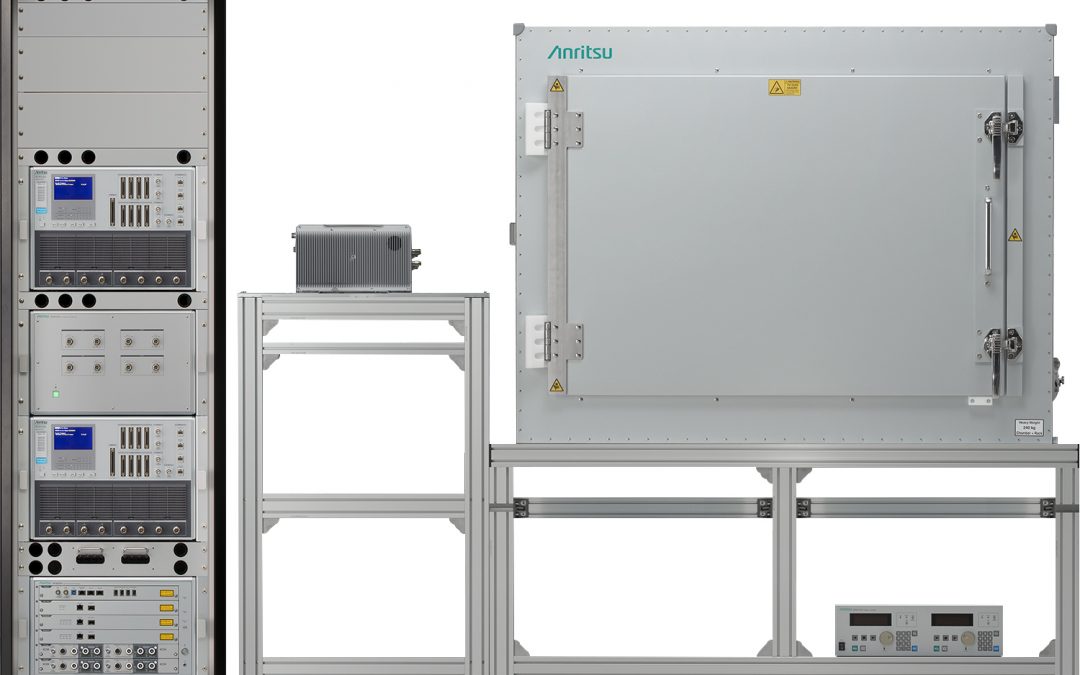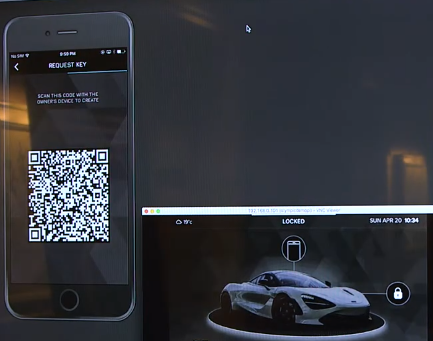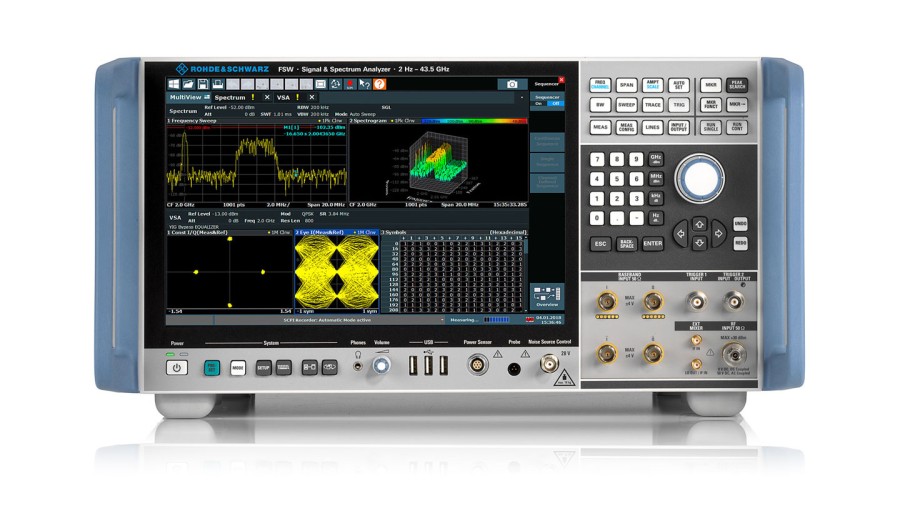Better Together: 5G and Wi-Fi 6
By Mark Montierth, VP and GM of NXP’s new Wireless Connectivity business
At the heart of every smart city there are cellular and Wi-Fi networks working together, as part of the wireless infrastructure, to provide real-time access to vital information and services. Whether it’s public safety, emergency response, traffic control, utility grids, waste management or person-to-person interactions, mobile and fixed devices using cellular and Wi-Fi are part of the picture.
Now, as metropolitan infrastructures begin migrating to the next generations of cellular and Wi-Fi, there will be new opportunities for these two technologies to work together. The result will be smart cities that can anticipate and automate, making urban areas smarter, more efficient and safer.
What’s on the Horizon
There are several reasons why it’s time to upgrade cellular and Wi-Fi. Many more people and devices are accessing the network than ever before, and those numbers are only going to go up. Video makes up a large part of the data we’re accessing. But even though more devices are online and sending more data at once, we cant afford to sacrifice performance. What’s more, there are some applications, especially in transport, healthcare, and manufacturing, that need to operate at or near real time.
5G, the fifth generation of cellular, with its support for massive MIMO and mmWave, is designed to support dramatically higher speed and capacity on cellular networks. We’re already seeing limited deployment in select cities worldwide, but a complete transition to 5G will certainly take time. The many specific technologies that make up 5G, for consumer and industrial use, are in various stages of development and will ramp up over the next several years.
In the meantime, while the 5G infrastructure becomes more widespread, the sixth generation of Wi-Fi, known as 802.11ax or simply Wi-Fi 6, will bring more speed, lower latency and increased device density support to its share of the wireless infrastructure. Wi-Fi 6 chipsets are already available and OEMs are moving quickly to adopt the new format. ABI Research predicts that, by 2024, 70 percent of smartphones will support Wi-Fi 6, along with 93 million desktops and portable PCs.
A Powerful Combination
5G and Wi-FI 6 both promise significantly better performance but in somewhat unique ways. 5G, with its support for a large number of users per cell is well suited for use in outdoor applications. Similarly, Wi-Fi 6’s ability to also support high bandwidth and high user density but at a dramatically lower cost makes it ideal for indoor applications, such as stadiums, convention centers, shopping malls, school campuses and other places where people gather.
But that’s not to say it’s a choice of one over the other when selecting a wireless format for new smart city applications. In many instances, the two technologies will work together, creating a powerful combination that services fixed and mobile use cases.
Security and Cost
In some cases, cellular and Wi-Fi address similar needs, making it less clear which technology is the better fit. In these cases, considering security and cost requirements can help in the decision. Cellular, for example, can prevent unauthorized access because the SIM card uniquely identifies each users and can enable the network provider to control the features, bandwidth, networks and capabilities subscribers are authorized to use. This can be extremely valuable in creating differentiated services that emphasize online security. On the other hand, Wi-Fi is often a much more cost-optimized solution with no required network operator and significantly lower cost per node. Wi-Fi 6 is also fully backward compatible with all previous generations of Wi-Fi lowering the upgrade costs and supporting a more metered transition for users. While some large-scale enterprises decide to go it alone and establish their own private cellular network, being able to run plug-and-play Wi-Fi routers, without a cellular subscription, can be an attractive way to provide new applications and capabilities at substantially lower deployment and operating cost.
Upping the Application Ante
Moving to 5G and Wi-Fi 6 will bring new use cases that build on previous collaborations of cellular and Wi-Fi. For example, cellular carriers are likely to use new Wi-Fi 6 access points to handle the offload of their 5G networks, in much the same way they rely on current Wi-Fi technology to offload 4G and LTE services today.
In public offices, apartment buildings and private residences, upgrading to Wi-Fi 6 can add motion detection to wireless security systems or deliver higher-resolution video for 4k/8k video experiences. In both cases, the 5G network is the likely resource for high-speed streaming of high-definition video to and from the cloud.
In transport, 5G and Wi-Fi 6 can work together to improve onboard infotainment, support software and firmware updates in dense deployments and simplify the collection of advanced telematics, including video.
Connecting Fans
In public venues, such as shopping malls, school campuses and event spaces, people can toggle between 5G and Wi-Fi 6 as needed, depending on their location and need. Today’s smartphones already do this, but next-generation connectivity will make it possible for more devices to access more data, all at once.
A case in point is American football. The National Football League (NFL) reports that a record 26.42 terabytes of data was transferred within the stadium during Super Bowl LIV in Miami. Just over 70 percent of the more than 62,000 thousand people attending the event accessed the in-stadium Wi-Fi network, with an average usage per device of 595.6 MB – and that was using legacy Wi-Fi technology.
Next year, the NFL will be able to support an even higher level of access at SoFi Stadium in Los Angeles. The stadium, currently under construction, is installing Wi-Fi 6 and is expected to have more than 2,500 Wi-Fi 6 access points, providing four times more bandwidth and letting all of the up to 100,000 attendees be on their phones simultaneously using Wi-Fi.
Taking It to the Street
Smart vehicles will use 5G and Wi-Fi 6 to ramp up their communications with the transport infrastructure and will be able to communicate effectively with other vehicles, while in motion. Today’s vehicles already sport hundreds of sensors and can manage multiple data streams coming to the vehicle. To support real-time interactions, 5G and Wi-Fi 6 will make it possible to increase that capacity as much as tenfold.
When equipped with 5G and Wi-Fi 6, real-time traffic monitoring systems can use artificial intelligence algorithms to perform advanced video analytics and, in response to current conditions, control signage, lights and lane openings to optimize throughput and minimize delays.
Beyond the highway, the real-time responsiveness and ability to connect many more devices will let 5G and Wi-Fi enhance pedestrian areas and bike paths, too. Lamp posts can turn on and off as needed, when people are present, while sensors can send real-time alerts to warn everyone of oncoming traffic or a pedestrian crossing a street. Geofencing, which is used to monitor activity within a pre-set geographical boundary, can deliver personalized messages to people as they pass by, announcing upcoming events or nearby discounts at retailers and food outlets.
Behind the Scenes
Within the city infrastructure, 5G and Wi-Fi 6 will enhance essential services, such as the utility grid and waste management. Water and energy use can be managed more precisely, according to real-time events like a sudden change in the weather or a public gathering.
The IoT becomes more prevalent – and more impactful – with widespread coverage of 5G and WiFi 6. Solar-powered waste containers can sense capacity levels and notify maintenance crews in real time when a pickup is needed, thereby increasing responsiveness and efficiency while reducing the number of collection trucks needed to operate the system.
The city itself can be cleaner, quieter and more automated. Air filters, mounted on streetlights, can automatically turn on when pollution levels reach a certain point, and places that are often noisy – playgrounds, open-air cafes, nightclubs – can be equipped with noise-canceling or noise-dampening technology that automatically turn on when sound readings get above a certain level.
Comprehensive Coverage
With 5G and Wi-Fi 6 fully in place, nearly every point of a city’s physical infrastructure can be connected to a high-speed wireless network. Increased network capacity means more IoT devices will be able to monitor conditions and provide real-time information for data analytics, and enhanced broadband will improve safety and provide better experiences.
5G and Wi-Fi 6 are fully complementary technologies that will play a role in the ongoing evolution of smart cities, especially when it comes to supporting wireless interactions at the edge of the network.
Next-generation wireless, in all its forms, will create an infrastructure that fosters new ideas, creates opportunities and enhances the quality of life – in ways we’re already talking about and in ways we haven’t even thought of yet.
Related Articles

Anritsu, Sony Semiconductor validate industry first Non-Terrestrial Network (NTN) NB-IoT testcase
First NTN NB-IoT Protocol Conformance Tests for have been validated on the 5G NR Mobile Test Device Platform Anritsu Corporation has announced that the first NTN NB-IoT Protocol Conformance Tests for has been validated on the 5G NR Mobile Device Test Platform ME7834NR...

Ellisys Introduces Support for CCC Digital Key Technology
Protocol Updates Aid in Test, Validation, and Debug for Automotive and Consumer Electronics Developers and Test Labs Ellisys, a leading worldwide provider of Bluetooth®, Universal Serial Bus (USB), Ultra-Wideband, and Wi-Fi® protocol test and analysis solutions has...

Rohde & Schwarz 170 GHz power sensors ease use and traceability in the D-band
Rohde & Schwarz is launching the new R&S NRP170TWG(N) thermal power sensor for precise power level measurements in the D-band. The new R&S NRP170TWG(N) sensors from Rohde & Schwarz are used in general R&D for 6G mobile communications, novel sub-THz...
Stay Up to Date With The Latest News & Updates
Our Sponsors
Incisor.TV partners with leading organisations in the technology sector.
Follow Us
And stay up to date with our news! We are active across the key social media platforms – please do follow us!





0 Comments